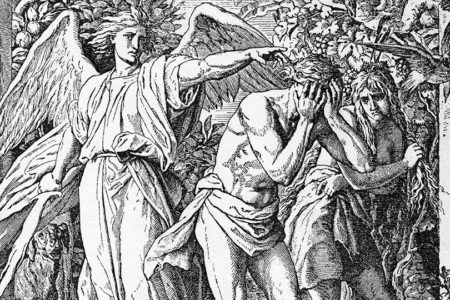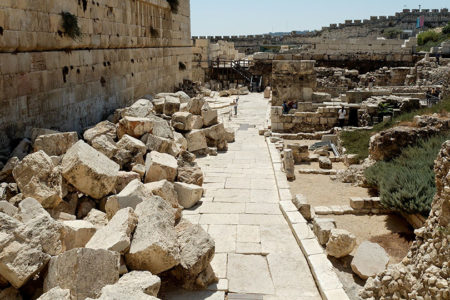Nebuchadnezzar: A ‘King of Kings’
Nebuchadnezzar, king of Babylon, had a tremendous impact on the nation of Israel and the history of the ancient Near East. He is referred to by name over 90 times in the Old Testament and has the ignominious distinction of being the man who destroyed Jerusalem and Solomon’s Temple and who ended the human rule of David’s dynasty.
Nebuchadnezzar II was the son and crown prince of Nabopolassar (626–605 B.C.) who, with the Medes, destroyed the Assyrian Empire. The final blow was delivered by Nebuchadnezzar himself when he defeated the coalition of Assyrians and Egyptians at Carchemish in Syria in 605 B.C.
Nebuchadnezzar brought his army all the way down to Judah, where he made King Jehoiakim swear allegiance (2 Ki. 24:1). Nabopolassar was sick in Babylon at the time and soon after died, enabling Nebuchadnezzar to be crowned king of Babylon on September 7, 605 B.C. He used his position to rule as a total despot for the next 43 years.
He expanded the territory held by the Assyrians to create the Neo-Babylonian Empire, which extended from Egypt to Syria to Media (Persia). Consequently, Babylon could demand tribute and resources (often human) from conquered countries. Captives, such as Daniel, were taken not merely for manpower but as hostages to forestall rebellions. Smaller nations often banded together to rebel against the king, but they were always ruthlessly crushed.
Such was the case with Judah. When Jehoiakim rebelled, his son Jehoiachin was taken captive in 597 B.C. and his uncle Zedekiah installed in his place. Finally, when Zedekiah rebelled, Nebuchadnezzar besieged Jerusalem for two-and-one-half years. The city fell on August 14, 586 B.C., when it and the Temple were burned.
After Jerusalem fell, Nebuchadnezzar besieged Tyre for 13 years, from 586 to 573 B.C. He was able to capture only the city on the coast, not the island. So he then took out his wrath on Egypt with an invasion against King Amasis in 568 B.C.: “’I have given him [Nebuchadnezzar] the land of Egypt for his labor, because they [the soldiers] worked for me,’ says the Lord Gᴏᴅ” (Ezek. 29:20; cf. vv. 17–19).
But perhaps the clearest picture we have of the man is from the book of Daniel, where Daniel served in Nebuchadnezzar’s court. The portrait is of a man who saw himself as the ruler of the world (a fact at that time) and was filled with pride because of it.
In Daniel 2 the king dreamed at night of a “great image” with a head of “fine gold” (vv. 31–32). The Lord showed Nebuchadnezzar that he indeed was the head of gold and had received the power to conquer Jerusalem (Ezek. 21:18–23). As a result, Nebuchadnezzar built the most glorious city in the ancient world (see “Babylon”). No wonder Daniel told him, “‘You, O king, are a king of kings. For the God of heaven has given you a kingdom, power, strength, and glory’” (Dan. 2:37).
Nebuchadnezzar’s fierce reaction to Shadrach, Meshach, and Abed-Nego’s refusal to worship a 90-foot-tall gold statue that he had ordered erected is understandable for someone who sees himself as supreme ruler of the world (Dan. 3). Unfortunately, Nebuchadnezzar did not initially recognize God’s hand in his ascendancy and, in his pride, thought it was due to his own might. For this blasphemy, God struck him for seven years with boanthropy, a rare form of insanity that caused him to live like a beast of the field until he learned who was the true King of kings (Dan. 4).
In this sense, Nebuchadnezzar represents the epitome of man’s pride against God’s rule. As the head of gold in the Daniel 2 image, which represents the entire history of Gentile nations that oppose God’s rule and suppress Israel, Nebuchadnezzar epitomizes human hubris and power. How fitting that he ruled over Babylon, the origin of mankind’s rebellion against God (Gen. 11).
The irony is that, while Nebuchadnezzar’s power was absolute, it was also short-lived. His descendants managed to mismanage the empire, so in a few short years Cyrus the Mede was able to conquer Babylon in 539 B.C. (Dan. 5). Thus the lesson of Scripture is even more appropriate: “‘God resists the proud, but gives grace to the humble’” (Jas. 4:6).







Why does God regard Babylon (gold) greater than the Persians (who are silver)? And Persia greater than Greece (who is only brass), and so forth?
Thank for your study on Nebuchadnectar. How do you know that the temple in Jerusalem was destroyed in 586B.C. As other commentators cite 588-585 B.C.?
Thank you for your reply.
Kind regards Michael